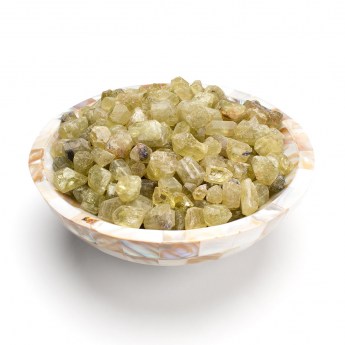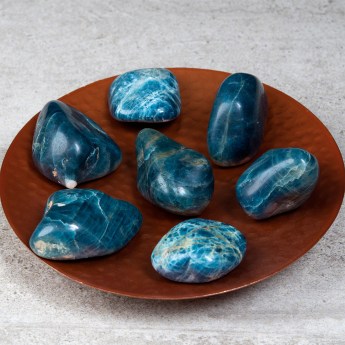Apatite: Properties, Meaning, Facts and Photos

What is Apatite?
Apatite is an important mineral in geology because it's commonly found in igneous, sedimentary and metamorphic rocks.
Being a phosphate mineral, it's a significant source of phosphorus. Phosphorus is an essential nutrient for all forms of life. Phosphate minerals contain phosphate as their primary component. The chemical composition of phosphate is one phosphorus atom bonded to four oxygen atoms.
Phosphorus plays an important role in various biological processes, including the formation of DNA.
Phosphate minerals are typically formed through geological processes involving the weathering and erosion of rocks containing phosphorus-rich minerals.
The phosphate ions are released and react with other environmental elements and compounds to form various phosphate minerals.
Ions are crucial for the formation of minerals because they participate in the chemical bonding and arrangement of atoms. Ions ultimately determine the mineral's structure and properties. Although often referred to as Apatite, this name describes an entire group of phosphate minerals.
Although often referred to as Apatite, this name describes an entire group of phosphate minerals.
Apatite, first identified in its mineral form in 1827, has a long and complex naming history. Today, the only types of apatite recognised are chlorapatite, fluorapatite, and hydroxylapatite (commonly known as hydroxyapatite), named for the chlorine, fluorine, or hydroxyl ions in their structure.
Earlier studies used a variety of names, including collophane and francolite, amongst others.
Apatite is a major component of teeth and bones, which has led to the production of synthetic apatite for medical use. Synthetic apatite, particularly hydroxylapatite, was first used as a bone replacement in 1920.
Although its tensile strength is lower than natural bone, it remains an important material in modern medicine and is often used to coat stronger substances like titanium in implants.
Apatite is a rich source of phosphorus and is used extensively in industry to produce fertiliser.
Although occasionally used as a gemstone, it's not popular because apatite is soft, fragile and scratches easily. On the Mohs scale of mineral hardness, it grades 5. Apatite is the index mineral for this grade of hardness.
When used for jewellery, apatite tends to be cut as a cabochon because it's brittle, making it difficult to cut. The finest gemstones may be faceted but will often have imperfections.
Apatite crystals occasionally feature inclusions of the mineral rutile, which can cause slight chatoyance. Where this optical phenomenon is present, stones tend to be known as Cat's Eye.

Apatite occurs in many different colours and can also be colourless or multicoloured. Blue apatite is particularly popular, but mostly with rock and mineral collectors.
Apatite is often heat-treated, which enhances the colour.
The name comes from the Greek word ‘apate’, meaning ‘to deceive’, because apatite was known to mislead mineralogists during identification. It can be easily mistaken for similar-looking minerals.
Article Pictures
The apatite at the top of our article and the last photo are courtesy of Stan Celestian. Both images are clickable and redirect to the original photo.
The rough blue apatite and green apatite crystals are from our collection. The green apatite image is clickable.










